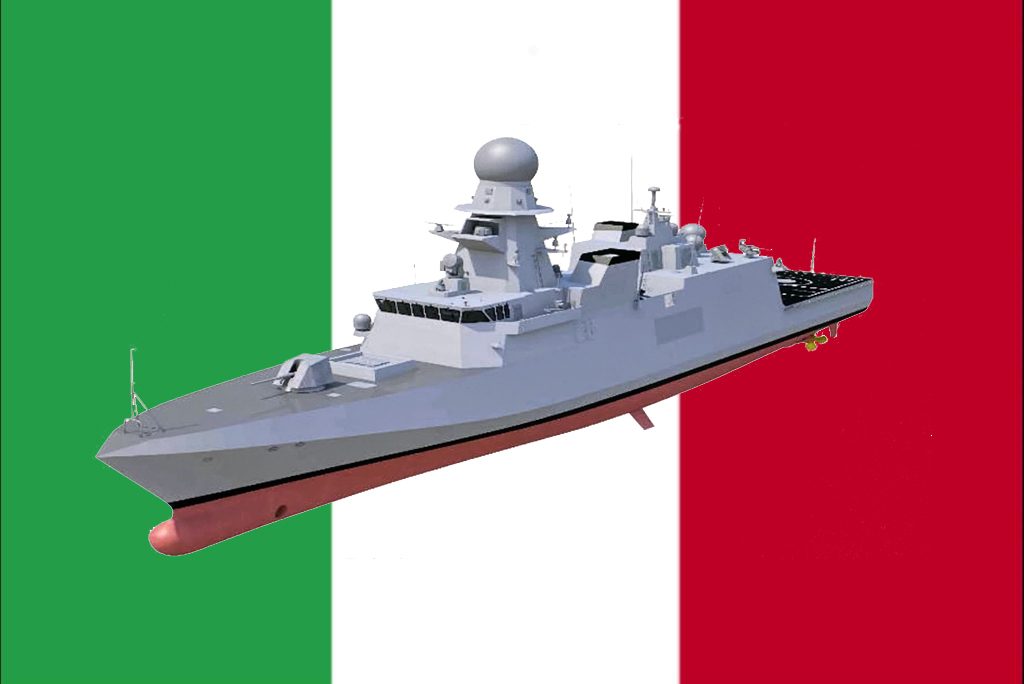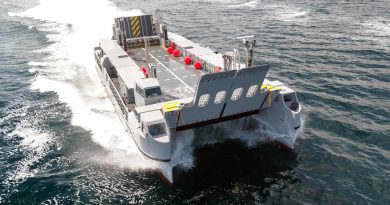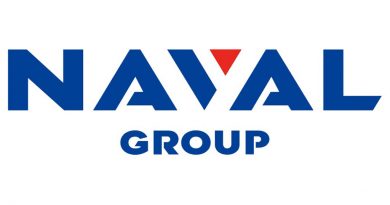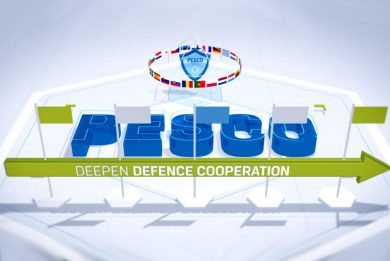
Early Italy’s EPC design concept revelead
Under the Italian Navy’s strategic guidelines 2019-2034 document, the service has indicated a requirement for the replacement of the current fleet of four armed patrol and six multipurpose (four Cassiopea-class and two Sirio-class) OPVs with eight new platforms under the so-called PPX programme. To satisfy this and French Navy requirements the two services joined forces under the PESCO’s European Patrol Corvette (EPC) programme. Thanks to internal studies in which operational requirements and technical solution grow together, the Italian Navy developed a single design concept with different versions, which early iteration (before joining the EPC requirements harmonization phase) was presented by Italian Navy General Staff representatives during the IQPC OPV International 2020 online conference.
According to the presentation, the early design concept resembles an heavy armed corvette with a CODLAD configured propulsion and internal layout characterized by a modular area amidship, forward of the hangar structure. With a displacement of about 3,000 tons, a length and beam of respectively 107 and 14.4 meters, the design presents a hull and superstructures outlines with shark head-resembling bow covered area and superstructures with a single main mast (and secondary small communications mast), fixed fins amidship and twin shafts with variable pitch propellers and conventional rudders. According to Italian Navy representatives, the propulsion package is based on a CODLAD (COmbined Diesel eLectric And Diesel) configuration with two 8 MW each diesel engines and two electric motors, the latter for long-endurance low speed patrolling operations, in addition to an undisclosed number of gensets for electrical power.
The maximum speed is set at 24 knots while on electric motors it reaches 11 knots, and the endurance is indicated in 4,000 nm at 14 knots. The ship features a stern flight deck and hangar to host a 10 tonnes NFH90 type helicopter and unmanned air vehicles. With accommodations for 115 persons with 85-90 crew elements, based on the missions required to be accomplished, including presence and surveillance, maritime interdiction operation, air and coastal defence, humanitarian assistance and disaster relief, the early PPX design features a modular area forward of the hangar structure capable to accommodate 20’ standard containers which can be embarked on the flight deck and reach the modular bay through the hangar, according to the early design concept. A launch and recovery station for an organic 9 meters RHIB is positioned at the stern under the flight deck together with accommodations for a torpedo detection system, in addition to two 7.3 meters RHIBs stations amidship on the side of the modular bay.
According to the images and information provided during the presentation, the combat system is expected to be based on the same CMS, sensors and weapon systems from Leonardo, MBDA and Elettronica, already under acquisition and installation on new ships for the Italian Navy, including the PPA, LHD and LSS. The platform management system is expected to be based on the same Fincantieri’s Seastema SeasNavy suite, already used on the latter vessels. A variant of the common SADOC 4 CMS will manage a suite of sensors centered on Leonardo’s Kronos Grand Naval 3D radar with IFF in addition to an air/surface surveillance radar and Leonardo SASS IRST together with a NA-30S Mk2 dual-band radar/EO-IR fire control system for the main gun alongside Leonardo Medusa Mk 4 FCS for smaller guns. The Leonardo underwater suite will include an obstacle alert sonar and a torpedo defence system. The RESM/CESM/RECM is expected to be a variant of the Elettronica integrate suite developed within the Legge Navale’s fleet renewal programme, in addition to a communication suite including software defined radios and tactical data link.
The weapon package is to include up to two 8-cell A50 VLS for surface-to-air missiles for which, although not discussed during the presentation, EDR Online understood, a potential future candidate is the MBDA CAMM ER system, a Leonardo 76/62 Super Rapido main gun and two 25/80 mm remotely controlled guns, two Leonardo’s DLS 20 launchers for both AAW and torpedo decoys, non-lethal weapons, machine guns and provisions for two twin launchers for Teseo antiship missiles in addition to the NFH90 helicopter equipped with light-weight torpedoes.
The opening computer generated image is notional, and was provided by the Italian Navy during the IQPC conference. It does not represent the final EPC configuration, as this will be available only following the convergence of the various nations requirements.



